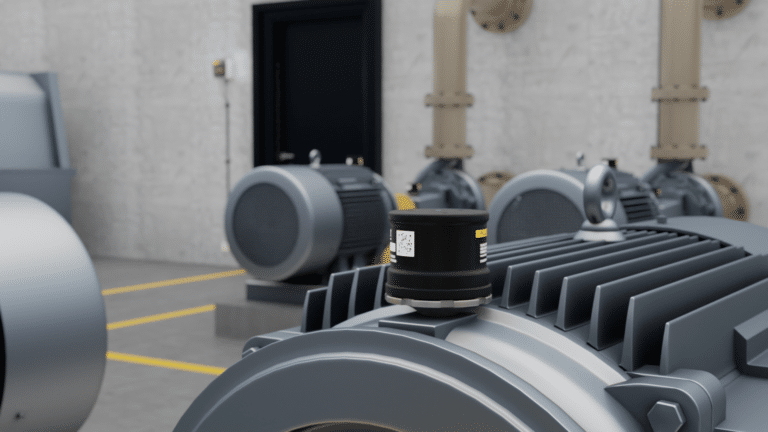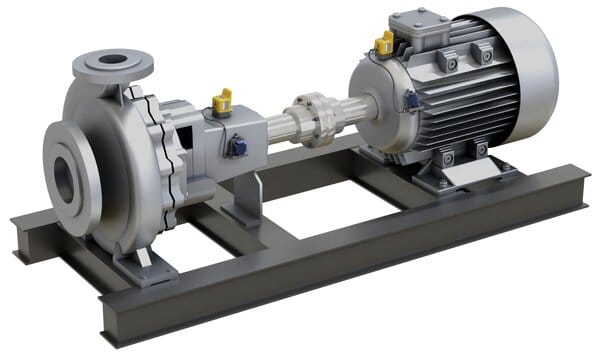
Three-phase power monitors are vital condition monitoring tools for catching changes in key electrical variables. For example, voltage, current, frequency, and energy consumption can fluctuate as machinery sees excess loads. That means that a power monitoring tool can screen assets for performance issues and premature wear.
Examples of Power Monitoring in Action
Imagine a machine that stamps plastic parts. It has three different phases coming into the asset, and occasionally, one of those phases becomes unbalanced. An unbalanced phase affects the proper functioning of the asset because the motor or pump increases its power consumption and does not work as designed.
This particular machine tries to get by with one-third of the amount of power. Because of the low power, the machine works overtime and can’t operate in the optimal range. While the machine typically produces a circular widget, it now comes out oval-shaped. A maintenance technician on the floor concludes that it is producing defective parts. The worker shuts down the machine to attempt to fix it, but this is going to take a while without knowing the exact cause of the problem.
The cause of the potential power being unbalanced from the motor resulted in the defective manufactured part. Without collecting and reviewing the data continuously, the technician may not identify the issue and could waste time trying to determine the root cause. After troubleshooting through trial and error, workers attempt to resolve the issue. But with the exact problem left unresolved, more significant damage could occur down the road.
With the Fluke 3540 FC Three-Phase Power Monitor, however, the previous scenario has a different outcome. When an asset or motor has an unbalanced phase, an alarm alerts the technician that a change in the condition occurred.
With a Power Monitoring Device, Data Infuses the Workflow
Collecting data with a power monitoring tool lets teams observe equipment performance remotely, and the corresponding alarms alert teams when changes in power conditions occur. Organizations can monitor power variables to detect underlying electrical or mechanical issues.
A power monitoring device provides maintenance managers, reliability engineers, and electrical contractors with real-time, 24/7 trending data visualization. Sharing data across a team brings the full knowledge to the group, allowing them to prioritize and keep their equipment running smoothly.
The Fluke 3540 FC is a compact device used to monitor critical electrical parameters for three-phase machinery and to stream the data seamlessly to the Fluke Connect Cloud.
By logging onto the Fluke Connect Cloud with their mobile device or computer, maintenance and reliability team members have access to troubleshooting data to help solve the problem. The trend lines help them identify the performance issues, and the graph clearly shows a significant drop in one of the loads.
When a problem arises, a maintenance tech can be dispatched with the right tools and parts to correct the problem. After the tech resolves the issue, the manager exports the data from the cloud and prepares a report.
Electrical Technicians Stay Ahead of Problems
Electrical technicians hired to watch critical assets benefit from power monitoring as well.
For instance, if an HVAC system breaks down, the electrical contractor must immediately stop and fix the issue. This could mean diverting from one customer to another, disrupting schedules, and inconveniencing several customers. The remote data and remote alarms viewable through power monitoring software make it possible for the electrical contractor to know about the problem ahead of time.
The 3540 FC allows users to set thresholds and monitor the asset. These thresholds alert users of any issues before the customer discovers a problem.
Without power monitoring, electrical contractors might ask their workers to check assets at a facility weekly. The remote data from power monitoring eliminates these unnecessary visits, reducing truck rolls, which results in time and cost savings.
Ultimately, power monitoring can help prevent unplanned downtime, solve problems faster, and enable data to be stored and shared in a central database. That means maintenance managers, reliability engineers, and electrical contractors can increase their effectiveness and efficiency and avoid additional costs.






